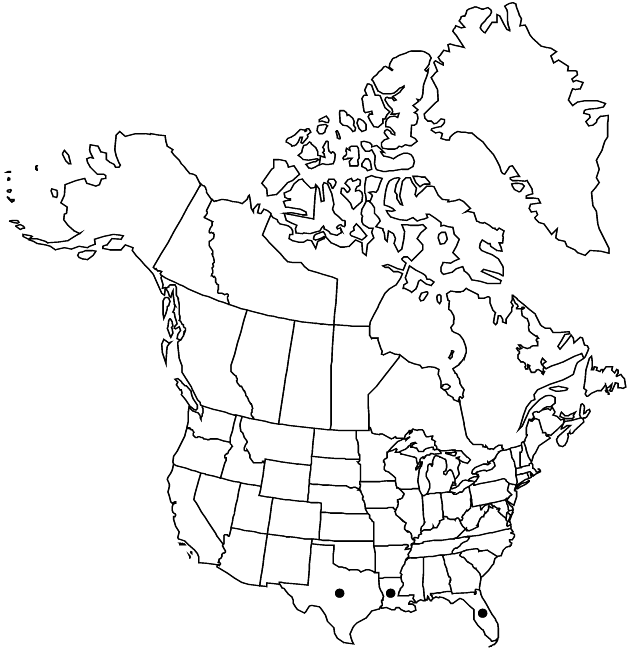Emilia fosbergii
Phytologia 32: 34. 1975.
Annuals, 20–100 cm, glabrous or sparsely arachnoid-villous proximally. Stems 1, often somewhat lax, simple or branched. Leaves ± equally distributed; sessile and auriculate to winged-petiolate and clasping; blades oblanceolate to pandurate, mostly 5–10 × 3–5 cm (distal smaller, bractlike), margins entire, toothed, or weakly lobed. Involucres campanulate to cylindric, 9–14 mm, relatively thick, lengths 1.5–2(–3) times diams. Phyllaries usually 8 or 13. Florets usually 50–60+, surpassing involucres by 2–4 mm; corollas pinkish, purplish, or reddish (not orange), lobes mostly 1–1.7 mm; style appendages ca. 0.2 mm. 2n = 20.
Phenology: Flowering probably year round, mostly Oct–Mar.
Habitat: Disturbed sites, pinelands, abandoned fields, roadsides
Elevation: 0–100 m
Distribution

Fla., La., Tex., Asia, also introduced in New World tropics, Mexico, West Indies, Central America, South America.
Discussion
Emilia fosbergii is a tropical Asian weed that has become established in the flora; it may be expected elsewhere as an occasional escape. It is the more frequently collected Emilia in the flora. Names misapplied to plants of E. fosbergii include E. javanica (Burman f.) C. B. Robinson and E. sagittata Willdenow.
Selected References
None.